Dryads: Guardians of the Forest in Myth and Legend
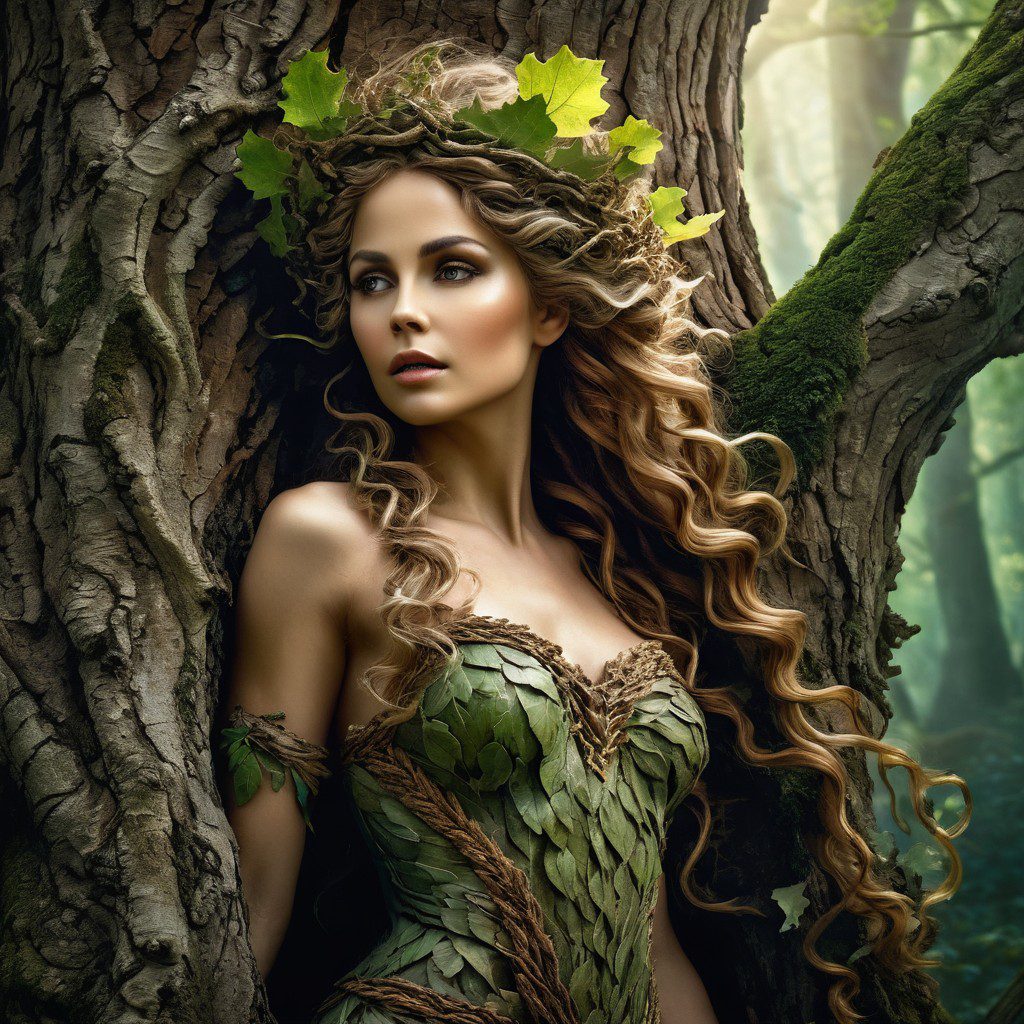
Dryads, the ethereal tree nymphs of Greek mythology, are more than just mythical creatures—they are the embodiment of nature itself, intimately connected to the forests and trees they inhabit. As protectors of the woodland and the spirits of individual trees, dryads have long been symbols of the mysterious and powerful forces of nature, representing life, growth, and the balance between humans and the environment.
In this blog, we will explore the origins of the dryads in ancient mythology, their unique role as guardians of the forest, and their presence in art, literature, and modern pop culture. Whether depicted as nurturing spirits or elusive beings, dryads have enchanted storytellers and audiences for centuries, reminding us of the sacred bond between humanity and the natural world.
The Origins of Dryads in Greek Mythology
The word “dryad” comes from the Greek word “drys,” meaning “oak,” as dryads were originally associated with oak trees. In Greek mythology, however, dryads are not limited to oaks alone—they are the nymphs of all types of trees, with specific types of dryads tied to specific species. Like other nymphs, dryads are female spirits who represent natural elements, but they are particularly tied to the life and health of the trees they inhabit.
Dryads are often seen as gentle, nurturing figures who protect the forests and live in harmony with the natural world. However, they can also be fierce protectors, punishing mortals who harm their trees or disrespect the sacred woodlands. In many myths, dryads are depicted as shy, reclusive beings who are wary of human interference, but they are also associated with fertility, beauty, and the renewal of life.
Types of Dryads: Tree Spirits and Their Unique Connections
While dryads are generally considered spirits of trees, Greek mythology identifies several different types of dryads based on the specific species of tree they inhabit. Some of the most well-known types include:
1. Hamadryads: The Tree-Bound Dryads
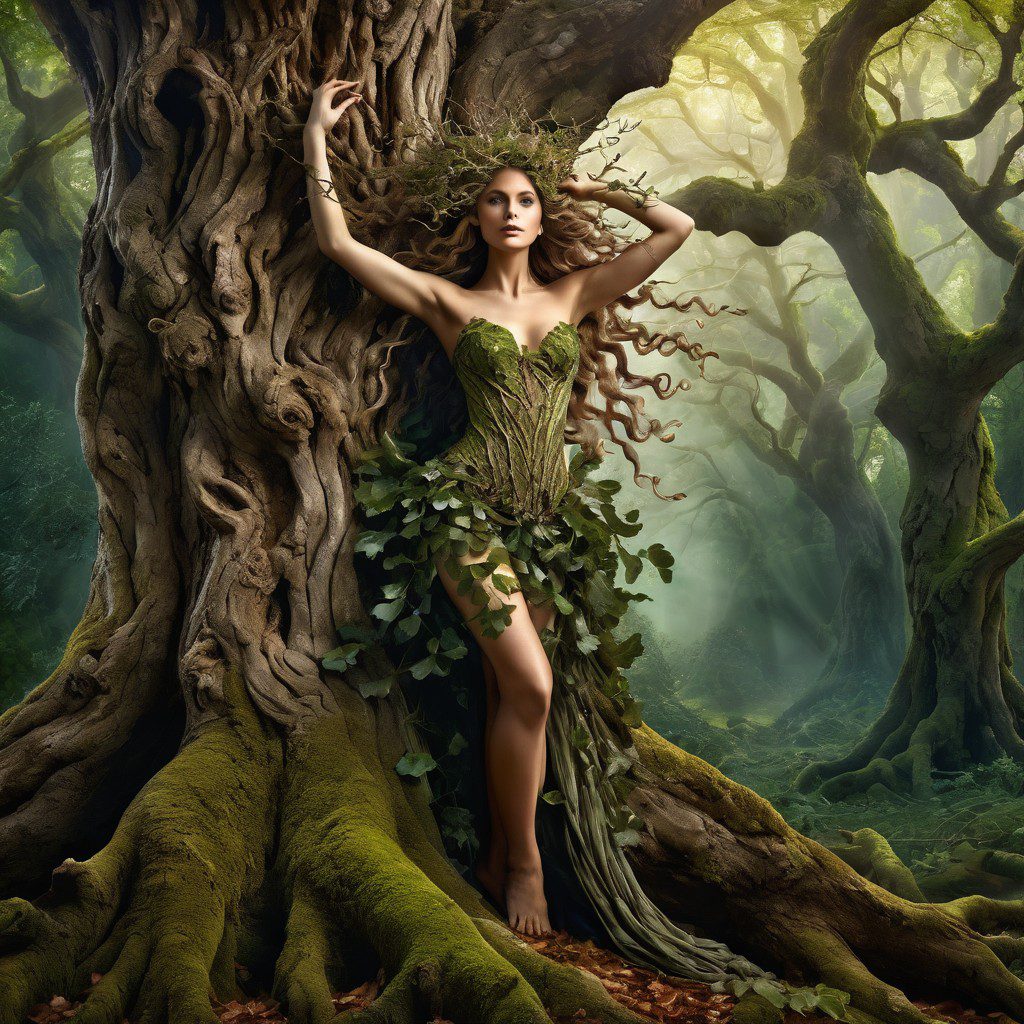
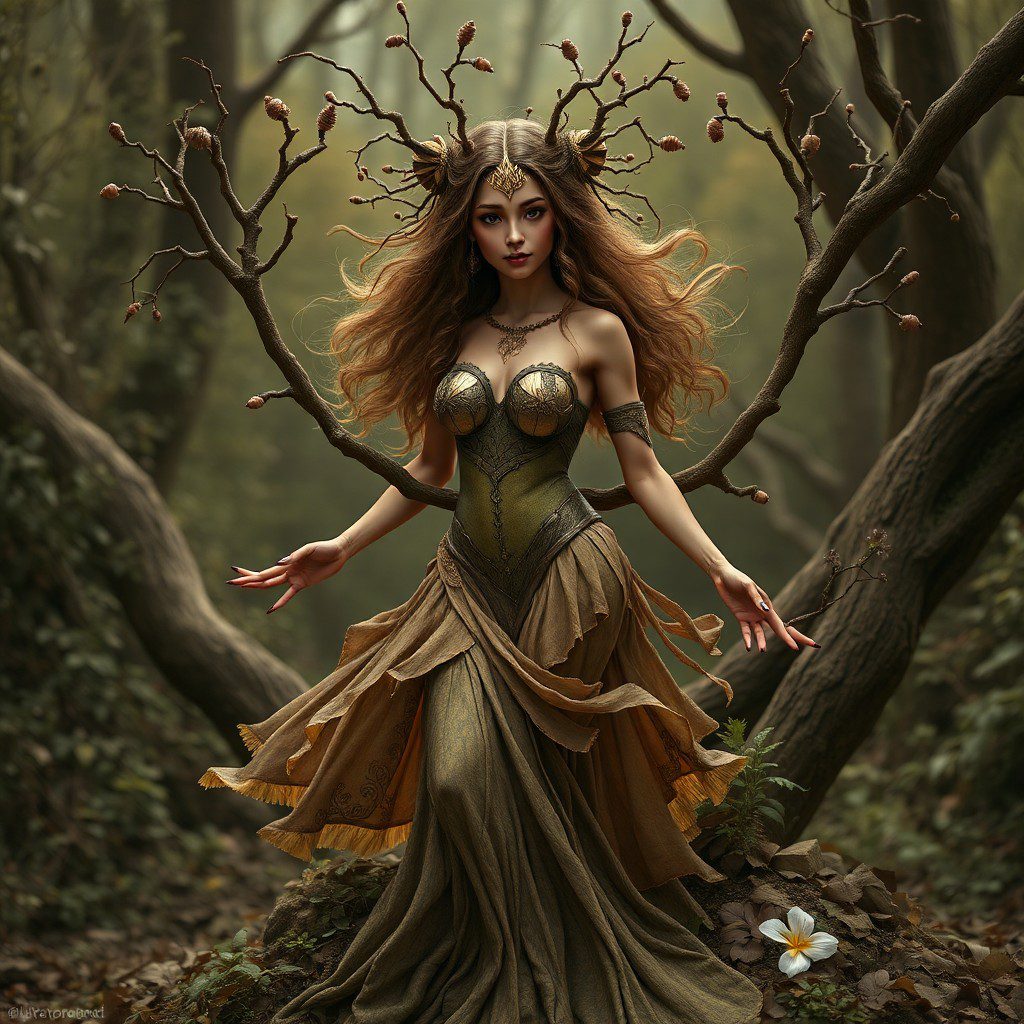
The Hamadryads are a special type of dryad who are bound to a single tree, and their lives are inextricably linked to that tree’s fate. If the tree dies, the Hamadryad dies with it, reflecting the deep, symbiotic relationship between these nymphs and their natural homes. The concept of the Hamadryad highlights the fragility and interconnectedness of life in nature, as the nymph’s survival depends entirely on the health of her tree.
Hamadryads were revered and protected in ancient Greece, and many myths emphasize the consequences of harming their trees. For example, in one story, the king Erysichthon cuts down a sacred tree in a grove dedicated to the goddess Demeter, despite warnings from the Hamadryad inhabiting the tree. In response, Demeter punishes Erysichthon with insatiable hunger, eventually leading to his self-destruction. This myth illustrates the reverence for nature in ancient Greece and the dire consequences of disrupting the balance of the natural world.
2. Meliads: Nymphs of the Ash Tree
The Meliads are nymphs of the ash tree, associated with the goddess Gaia and the ancient race of warriors born from ash trees. In Greek mythology, ash trees were closely linked to the origins of humankind, and the Meliads were considered protectors of these primordial trees. The Meliads are sometimes depicted as more warlike than other dryads, reflecting the strength and resilience of the ash tree, which was often used to make spears and weapons in ancient Greece.
3. Oreads: Mountain Nymphs (Also Associated with Trees)
Though technically mountain nymphs, the Oreads are often associated with trees and wooded landscapes found on high mountain slopes. Unlike other dryads, Oreads are more wild and untamed, embodying the rugged, untamable beauty of mountain forests. They are often depicted as companions of the huntress Artemis, roaming freely through the highlands.
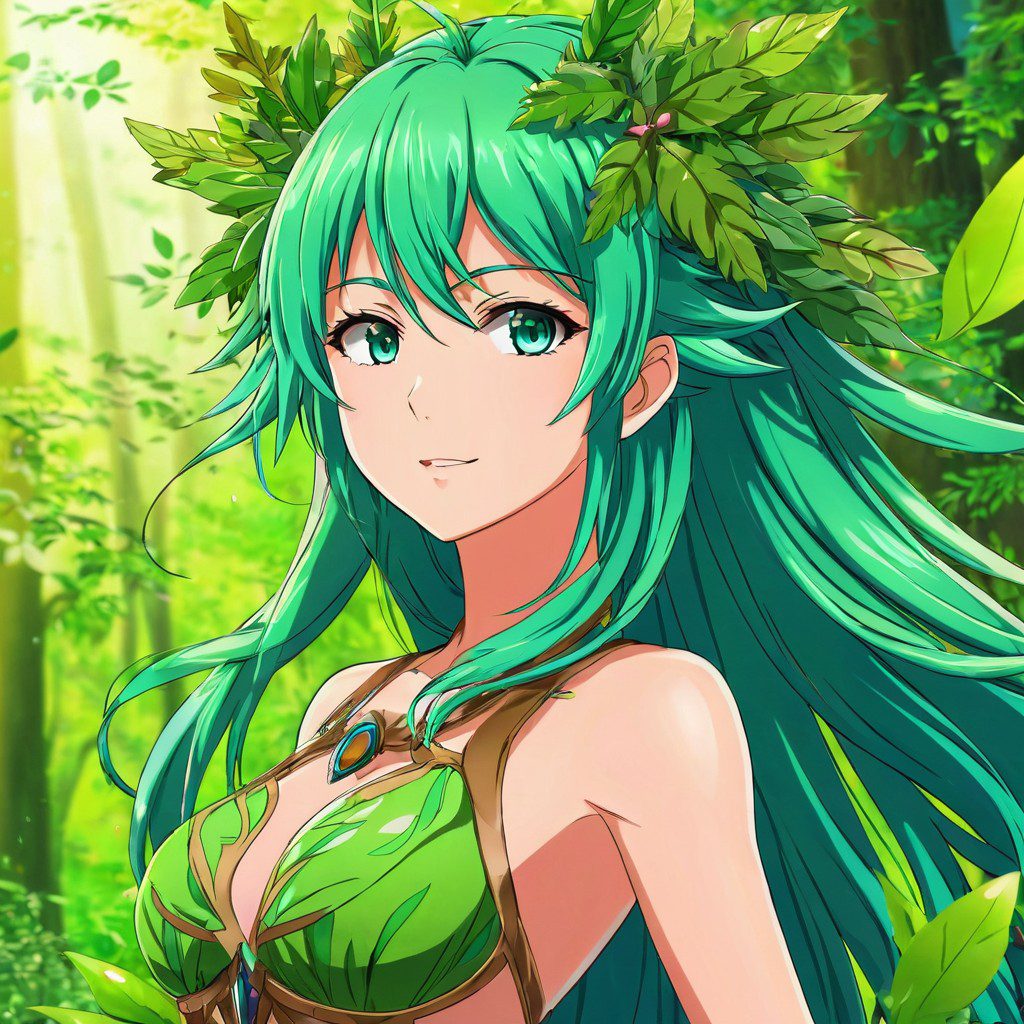
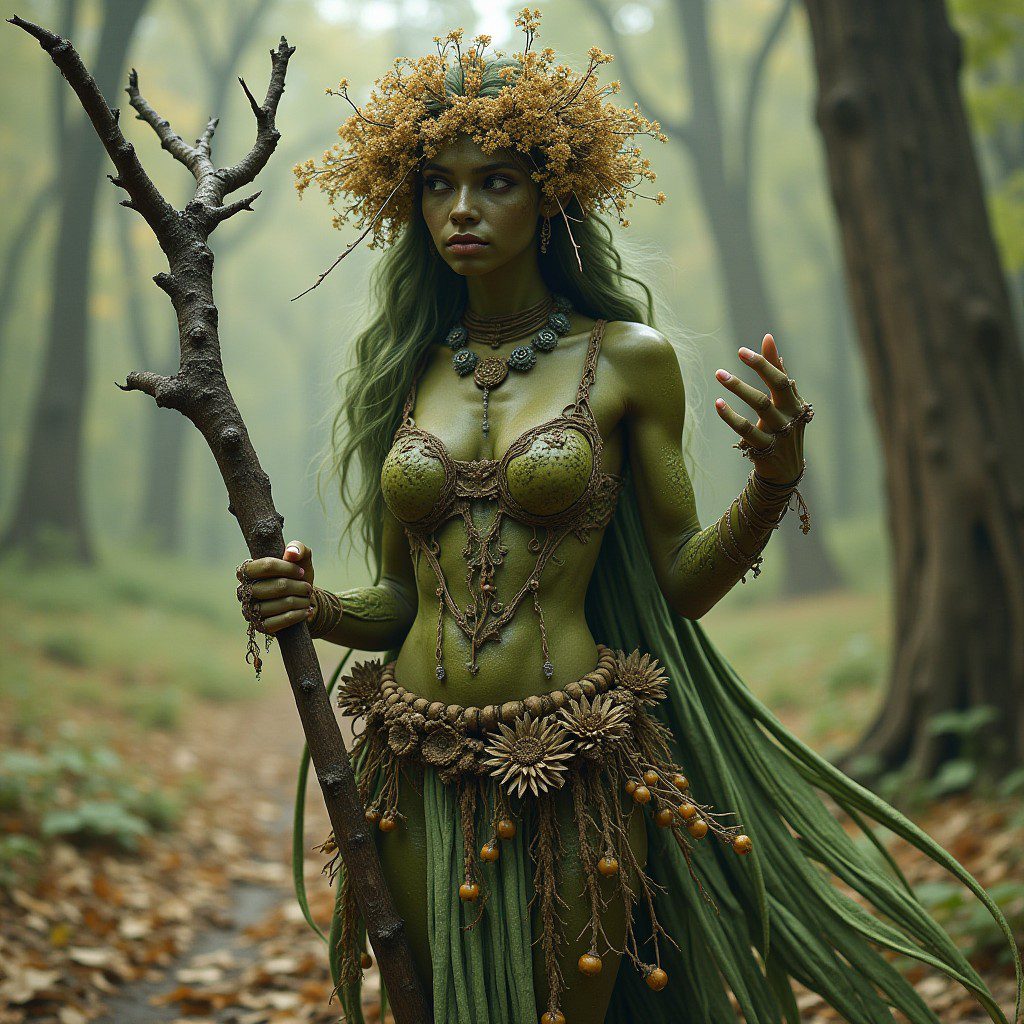
4. Other Tree-Specific Dryads
There are also dryads associated with specific types of trees, such as:
- Daphnaie: Nymphs of laurel trees, often linked to the myth of Daphne, who transformed into a laurel tree to escape Apollo.
- Meliae: Nymphs of fruit trees, who symbolize fertility and abundance.
These tree-specific dryads underscore the ancient Greeks’ belief in the sacredness of all aspects of nature, with each species of tree having its own spirit or guardian.
Dryads in Greek Mythology: Protectors and Punishers
Dryads often play significant roles in Greek mythology, particularly as protectors of the natural world. Though they are generally depicted as shy and peaceful beings, they do not hesitate to take action when their trees or forests are threatened.
The Myth of Daphne
One of the most famous myths involving a dryad is the story of Daphne, a beautiful nymph who was pursued by the god Apollo. Desperate to escape his advances, Daphne prayed to her father, the river god Peneus, to save her. In response, she was transformed into a laurel tree just as Apollo reached her. Heartbroken, Apollo declared the laurel tree to be sacred and wore a crown of laurel leaves in her honor.
This myth reflects the dryads’ close connection to nature and their ability to merge with the natural world to escape danger. It also highlights the theme of transformation, which is common in nymph mythology, as dryads can literally become one with the trees they inhabit.
The Sacred Groves and Punishments
Dryads were often associated with sacred groves—wooded areas dedicated to the gods, where the trees were considered inviolable. In many myths, mortals who harm these groves are punished by the dryads or by the gods they serve.
For example, in one story, the Greek hero Orpheus encounters a group of dryads in a sacred grove. The dryads mourn with him after the death of his wife Eurydice and encourage him to travel to the Underworld to retrieve her. This story emphasizes the dryads’ empathy and their role as guardians of sacred, natural spaces.
In another myth, the god Pan, known for his association with the wilderness, frequently interacts with dryads. Pan, the god of the wild, pastoral life, and shepherds, often chases or flirts with these elusive nymphs, further underscoring the connection between dryads and the untouched, natural world.
Dryads in Ancient Greek Religion and Culture
Dryads were not only important figures in myth but also played a role in ancient Greek religious practices. Forests and trees were often considered sacred in ancient Greece, and dryads were worshiped as part of the broader pantheon of nature deities.
Temples and sanctuaries dedicated to gods like Artemis, Demeter, and Dionysus were often located in wooded areas, and these spaces were considered the domain of the dryads. Sacrifices, offerings, and festivals were held in these sacred groves, where trees were treated with great reverence. Cutting down a tree in such a place was not only seen as an offense to the dryads but also to the gods themselves.
Dryads in Art, Literature, and Modern Popular Culture
Dryads have long been a source of inspiration for artists, poets, and writers. In ancient Greek art, dryads were often depicted as beautiful, youthful women, sometimes emerging from trees or standing gracefully in forested landscapes. Their presence in art underscores the ancient belief in the sacredness of trees and the life force that exists within nature.
Dryads in Renaissance and Romantic Art
During the Renaissance, dryads were a popular subject for artists inspired by classical mythology. In these works, dryads were often depicted as ethereal, delicate figures, symbolizing the beauty and harmony of nature. The Romantic period further embraced this imagery, with poets and painters emphasizing the wild, untamed aspects of nature that dryads embodied.
For instance, in John Keats’s poem “Ode to a Nightingale” (1819), the poet imagines himself joining the dryads in their forest realm, leaving behind the sorrows of human life to embrace the eternal beauty of nature.
Dryads in Fantasy Literature and Pop Culture
Dryads have also become a beloved part of modern fantasy literature and pop culture. In J.R.R. Tolkien’s “The Lord of the Rings”, the concept of tree-like beings protecting forests is embodied by the Ents, ancient creatures that defend the forests from harm. While not directly called dryads, the Ents reflect similar themes of guardianship and the symbiotic relationship between beings and trees.
Dryads are also featured in C.S. Lewis’s “The Chronicles of Narnia,” where they are depicted as guardians of the woods and allies of Aslan, the lion god-figure. In the Narnia series, dryads are often seen dancing, singing, and caring for the forests, reflecting their benevolent nature.
In video games like Dungeons & Dragons and The Witcher series, dryads are portrayed as powerful forest guardians with both mystical abilities and a deep connection to nature. These modern interpretations continue to emphasize the ancient role of dryads as protectors of the wild, adding a supernatural or magical element to their traditional lore.
Strengths and Weaknesses of Dryads
Though dryads are often portrayed as peaceful and nurturing beings, they possess unique strengths tied
to their natural environments. However, their connection to nature also makes them vulnerable in certain ways.
Strengths:
- Connection to Nature: Dryads are deeply tied to the forests and trees they inhabit, giving them the ability to communicate with the natural world, control plant life, and influence the growth of trees.
- Longevity: While not immortal like the Olympian gods, dryads live incredibly long lives, often as long as the trees they protect. This longevity gives them wisdom and knowledge of the natural world that few mortals possess.
- Power of Transformation: Many dryads, particularly Hamadryads, have the ability to merge with their trees, allowing them to transform into tree-like forms when needed or retreat into their trees for protection.
Weaknesses:
- Dependency on Trees: Hamadryads, in particular, are bound to specific trees, and their fate is tied to the health of those trees. If their tree is harmed or dies, the dryad dies as well.
- Vulnerability to Humans: While dryads possess certain supernatural abilities, they are often depicted as vulnerable to human interference. Mortals who cut down trees or destroy forests can bring great harm to these nature spirits, and they rely on the protection of the gods to punish those who harm them.
Conclusion: The Lasting Legacy of the Dryads
Dryads, with their deep connection to trees and the natural world, continue to be symbols of life, growth, and the balance between humanity and nature. As guardians of the forests, they remind us of the sacredness of the earth and the importance of protecting the environment. Their myths, which often emphasize both beauty and fragility, speak to the interconnectedness of all living things and the consequences of disturbing the natural order.
From ancient Greek mythology to modern fantasy literature, dryads have remained enchanting figures that embody the mysterious and powerful forces of the natural world. Their legacy endures, a testament to the timeless appeal of the natural world and the spirits that inhabit it.
